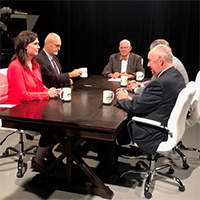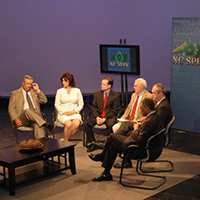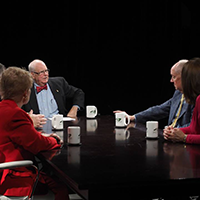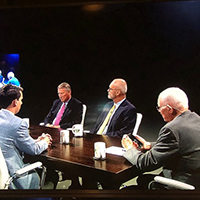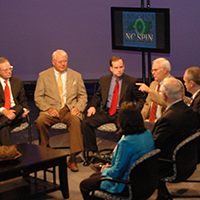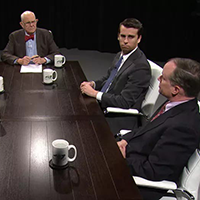Black Friday spending drop creates profit pressures
Published December 3, 2013
by Matt Townsend, Bloomberg News, published in Charlotte Observer, December 3, 2013.
The first spending decline on a Black Friday weekend since 2009 reinforced projections for a lackluster holiday, increasing chances retailers will extend the deep discounts already hurting their profit margins.
Purchases at stores and websites fell 2.9 percent to $57.4 billion during the four days beginning with the Nov. 28 Thanksgiving holiday, according to a survey commissioned by the National Retail Federation. While 141 million people shopped, about 2 million more than last year, the average consumer’s spending dropped 3.9 percent to $407.02, the survey showed.
The survey results, if borne out at cash registers in American malls and on website checkout screens, herald retailers’ likely return to Black Friday-type discounts this week and suggest added stress for several chains. Wal-Mart Stores and Target already cut profit forecasts after tepid sales gains in back-to-school shopping.
“Retailers didn’t get what they wanted from Black Friday, and they will need to make it up in the next three weeks,” Poonam Goyal, an analyst for Bloomberg Industries, said in an interview. “There will be some panic sales.”
Stores have started holiday promotions earlier since the last recession ended in mid-2009 – even pushing into October – to try to capture consumers’ first purchases and encourage them to part with more dollars beyond the day’s big deal. Sales in November and December account for 20 to 40 percent of U.S. retailers’ annual revenue and 20 percent of profit, according to the Washington-based NRF.
The retailers also have tried to take Black Friday – so named because of the myth that retailers didn’t become profitable until the day after Thanksgiving each year – and extend its marketing power to the surrounding days. This year, major chains such as J.C. Penney and Macy’s opened on Thanksgiving Day for the first time.
While all this hasn’t persuaded shoppers to spend a lot more, it has given them the perception that deals are always available, Goyal said. That perception has made the doorbuster bargains associated with Black Friday less effective at getting people to buy beyond one heavily discounted item.
This kind of so-called mission shopping, where a consumer buys one bargain-priced item and then leaves, will hurt profit margins, Goyal said. It may also explain why the number of shoppers increased but their spending fell, she said.
“That’s really bad for retailers,” Goyal said. Historically, Black Friday deals used to be the best of the year. Now that there are only a few items like that, consumers “are buying those and walking out the door.”
The early promotions also dampened sales during the Black Friday weekend by pulling purchases to earlier in the month, NRF President Matt Shay said on a conference call with analysts. The trade group reiterated its forecast for total sales in November and December to increase 3.9 percent.
In one of the other early reads on results, sales at brick-and-mortar stores on Thanksgiving and Black Friday posted an estimated 2.3 percent gain to $12.3 billion, according to a report from ShopperTrak, the Chicago-based research company. The results were in line with ShopperTrak’s prediction for holiday purchases to gain 2.4 percent, the weakest since 2009.
Amazon.com Inc. was the most-visited online retailer on Black Friday from home and work desktop computers, followed by eBay Inc. and Wal-Mart’s site, ComScore said.
Confidence among U.S. consumers, whose spending makes up about 70 percent of the nation’s economy, declined in November to a seven-month low, the Conference Board said last week.
This year, 65 percent of Americans said they were living paycheck to paycheck, up from 61 percent last year, in part because their purchasing power has been eroded by higher costs, according to research from Booz & Co.
“December will be a hugely promotional month to get those remaining shopping dollars out there,” said Pam Goodfellow, a director at Prosper Insights & Analytics, the research firm that did the survey for the NRF. “Retailers will be very aggressive.”

